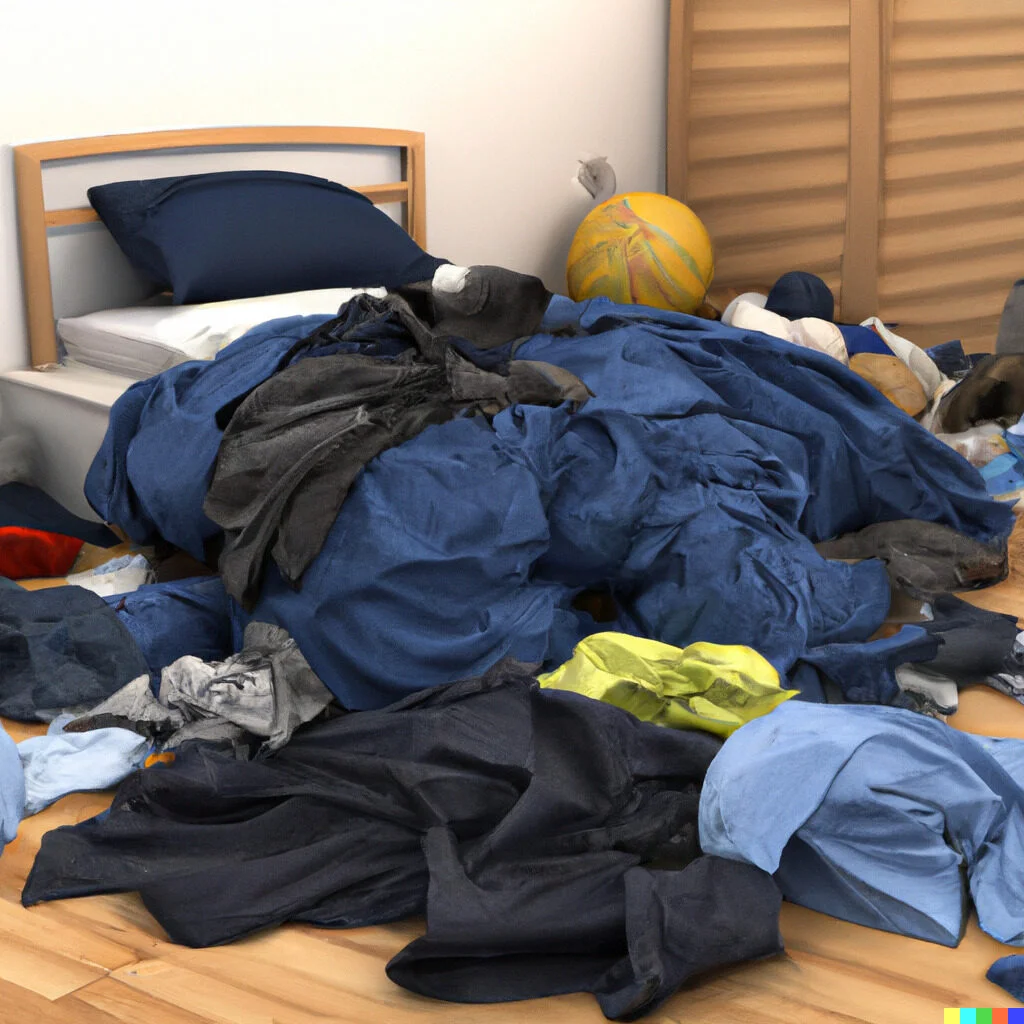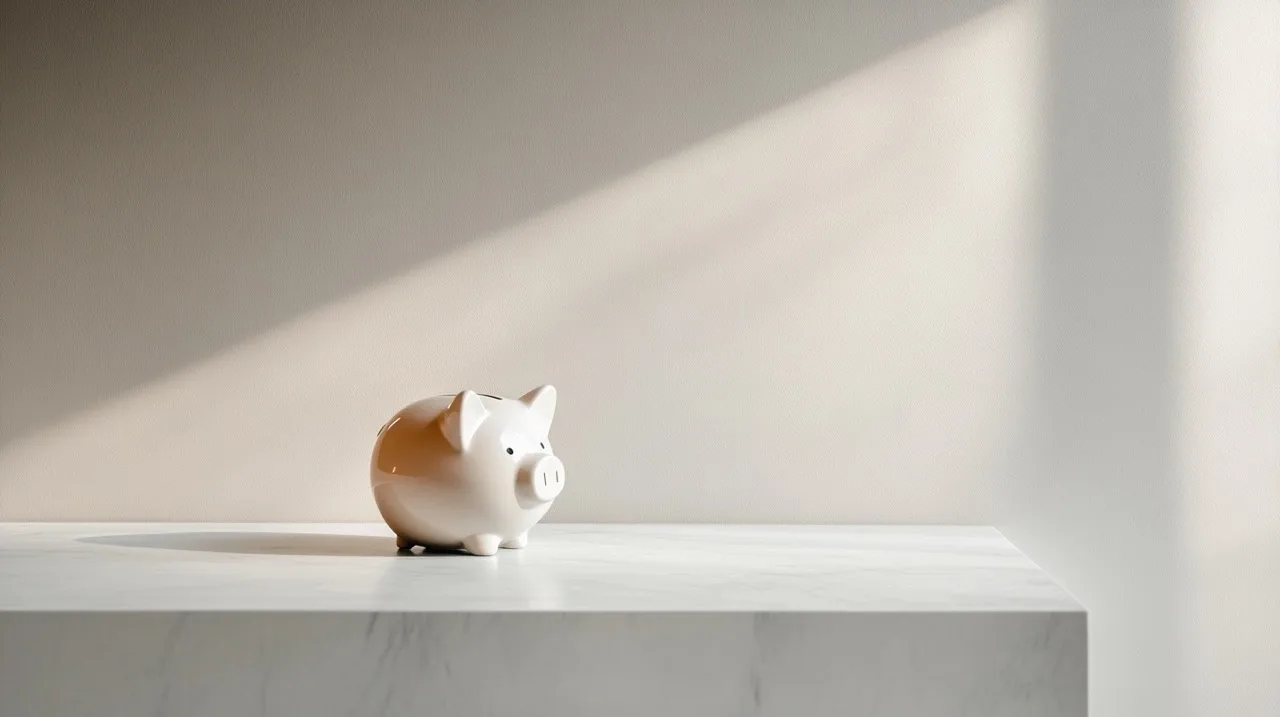Maybe you landed here because you often feel like you’re drowning in a sea of clutter. Or you struggle to keep your living space tidy and organised. If so, you’re not alone. Many people feel overwhelmed by messiness, but don’t know where to start when it comes to how to stop being a messy person.
The good news is that you don’t have to be a naturally tidy person to enjoy the benefits of an organised life. In this blog post, we’ll run through some practical tips and tricks on how to stop being a messy person—without the preachy dogmatism. Let’s explore the psychology of messiness and delve into some strategies for getting a bit more organised and maintaining a clutter-free environment. Whether you’re a natural-born “messy” or simply struggling to keep up with the mess of everyday life, this post is for you.
The Psychology of Messiness
Understanding the reasons behind messiness can help you more effectively address how to stop being a messy person. In most cases, messiness is not just a matter of laziness or lack of motivation. In fact, several psychological factors can contribute to our struggles with clutter and disorganisation.

For example, research suggests that a messy environment can have a negative impact on our mental and emotional well-being. It can lead to increased stress, anxiety, and even depression. On the other hand, a tidy environment can have the opposite effect, helping us feel calmer, more focused, and less stressed.

But the psychological reasons behind messiness can also be more complex. For some people, messiness may be a way of rebelling against authority or asserting their independence. For others, it may be a result of a more general sense of disorganisation in their lives, which spills over into their living space.
Whatever the reasons behind your messiness, it’s important to approach the issue with compassion and understanding. There’s no need to beat yourself up or feel ashamed about your struggles with clutter. Instead, focus on developing strategies to help you overcome your messiness in a way that feels achievable and sustainable. Let’s look at some practical steps you can take to start decluttering and creating a more organised living space that you feel happier in.
How to Stop Being a Messy Person? With Baby Steps Towards a More Organised Home
If you’re feeling overwhelmed by clutter, the prospect of getting organised can seem truly daunting. But it’s possible to make progress even if you’re a naturally messy person! The trick is to take baby steps.
- Start small: Don’t try to tackle your entire living space all at once. Instead, focus on one area at a time that’s bugging you, such as the ironing pile or a messy drawer. Tackling one little thing at a time helps you feel less overwhelmed and more motivated to continue.
- Set achievable goals: Rather than setting a broad goal like “Get organised,” set specific, achievable goals that will help you make progress. Write these down on a list. For example, “Organise and dust bookshelf” or “Sort through summer clothing.”
- Use the “four pile” method: When decluttering, sort items into one of four categories: Keep, Donate/Gift, Bin, and Re-sell. This will help you make decisions more quickly and efficiently.
- Be realistic: Don’t try to force yourself into a rigid organisational system that doesn’t work for you. Instead, focus on finding a system that feels intuitive and sustainable.
By taking small, actionable steps, you can slowly start making progress towards a more organised living space. As with any new habit you start building, you’ll also find that you gain momentum as you go along.
The sight of a bedroom with no clothes on the floor, for example, might spurn you on to tidying the living room the following weekend. Then you decide to weed out all those stacks of old magazines you’d collected over the years. And so on.
There also a few strategies you can arm yourself with to keep things tidy over the long term.
This Looks Great, But How Do I Keep It This Way?
Getting organised is one thing, but staying organised is another. If you’re a naturally messy person, it can be especially challenging to maintain an organised lifestyle in the long term. Here are some tips for staying on track:
- Develop routines: Make tidying and organising a regular part of your daily or weekly routine. Just a few minutes built into your day-to-day will really help stay on top of things and prevent a mess from piling up again. Cultivating tidy habits is the secret of those folks who always seem perfectly organised!
- Create a space you love: When you enjoy being in your space, you’re more inclined to naturally want to keep it organised and tidy. Be selective about your decor and furniture, and if you are purchasing any new organising helpers, you’ll want them to suit both your personal style and your lifestyle.
- Embrace imperfection: Remember that being organised doesn’t mean being perfect. It’s okay to have a little messiness in your life, as long as it’s not burdening you with anxiety or stress.
- Learn from setbacks: If you do have a setback and your space becomes cluttered again, don’t beat yourself up over it. We’re all human, and even Marie Kondo has loosened up a bit! Instead, focus on learning from the experience and finding strategies to prevent it from happening again in the future if it bothers you.
By strategically building habits that help you reach your goals, you can get a better grip on daily messes and maintain a calmer home. As always, slow and steady wins the race.
Small Changes Lead to a Big Difference

When it comes to learning how to stop being a messy person, there is no one-size fits all solution. It’s a journey of sorts which requires patience, self-compassion, and persistence. And it really comes down to you: what motivates you, what irks you, where your boundaries lie, how tidy does “tidy” have to be, and so on.
But by understanding a bit of the psychology behind messiness and developing a few practical strategies for getting and staying organised, you can make a change towards a more peaceful living space that has the capacity to help alleviate stress and even boost your productivity over the long run.
There will be setbacks and slip-ups along the way, but that’s okay. Take one little step today, and see what follows tomorrow. I bet you’ll like what you see.









Leave a Reply